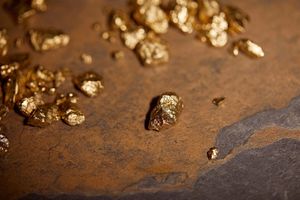As a popular option in the packaging and food industries, MG (Machine Glazed) paper comes in two main types: Bleached Mg Paper and Unbleached MG Paper. While both serve similar functional purposes, their appearance, raw materials, applications, and environmental attributes differ significantly.
In this article, we’ll walk you through the key differences so you can make the right choice for your business.
1. Appearance
Bleached MG Paper is bright White and smooth on one side, giving it a clean and premium look. It's often preferred in applications where visual appeal and brand presentation are important, such as food packaging for high-end markets.
On the other hand, Unbleached MG Paper has a natural brown or tan color. It maintains a more rustic and eco-friendly appearance, which has become increasingly popular as brands aim to communicate sustainability through their packaging.
2. Raw Materials
Bleached MG Paper is produced using chemically bleached virgin pulp or a mix with bleached recycled fibers. The process ensures high whiteness but involves more processing.
Unbleached MG Paper is made from unbleached virgin pulp or recycled fibers, retaining its natural color and reducing chemical usage, making it a more environmentally conscious choice.
3. Gloss and Printing Performance
Both papers are machine glazed, meaning they have one glossy side and one rough side. However, Bleached MG Paper typically has higher gloss and smoothness, which makes it ideal for high-quality, full-color printing and fine details.
Unbleached MG Paper is suitable for simpler designs or monochrome printing, often used in applications where function and sustainability outweigh visual detail.
4. Food Contact Safety
Both types can meet food-grade standards, but Bleached MG Paper is more often certified for direct food contact. It’s commonly used for food wraps, bakery liners, and candy packaging.
Unbleached MG Paper can also be safe for food contact and is often preferred by eco-conscious brands due to its minimal processing and natural ingredients.
5. Common Applications
-
Bleached MG Paper: Sugar packaging, burger wraps, candy wrapping, medical packaging, and white paper bags.
-
Unbleached MG Paper: Kraft wrapping paper, sandwich wraps, takeaway bags, and environmentally focused product lines.
6. Environmental Perception
Bleached MG Paper offers a clean, high-end look but may be perceived as less eco-friendly due to the bleaching process.
Unbleached MG Paper projects a more natural and sustainable image, making it a good fit for brands embracing green values and sustainable packaging trends.
7. Cost Consideration
Bleached MG Paper generally comes at a higher cost due to the bleaching process and visual appeal. Unbleached MG Paper tends to be more cost-effective and resource-efficient.
8. Ideal Customers
-
Bleached MG Paper: Ideal for customers in high-end markets who prioritize visual appearance and brand image.
-
Unbleached MG Paper: Perfect for customers focused on sustainability, natural aesthetics, and cost-effectiveness.
Final
At Sure Paper, we offer both Bleached and Unbleached MG Paper solutions, tailored to meet your packaging goals—whether you're looking for a refined, clean finish or an eco-friendly, natural look.
Need samples or a custom specification? Get in touch today. Let's find the paper that fits your brand's story.
Media Contact
Company Name: NINGBO SURE PAPER CO., LTD
Email: Send Email
Country: China
Website: https://www.sure-paper.com/





